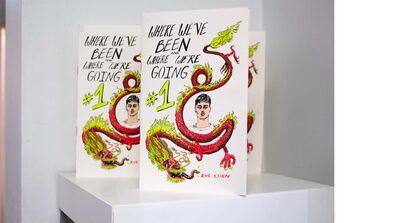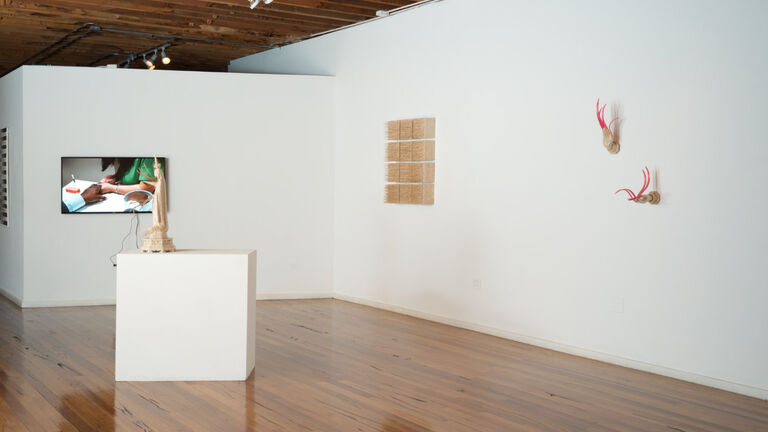
Image courtesy of avillagebeforeus.com
Student Thuy-Tien Vo Reflects on Curating A VILLAGE BEFORE US
In A VILLAGE BEFORE US, nine Chicago-based Vietnamese artists and scholars investigate their heritage, identity, memory, and dreams through their work. On view at Chicago’s John David Mooney Foundation in winter 2023, the exhibition was co-curated by School of the Art Institute of Chicago graduate student Thuy-Tien Vo. The wide range of pieces—including works by alums Nguyễn Trần Đoan Trang (BFA 2023), Maya Nguyen (MFA 2023), Ngô Hứa Minh Trí (BFA 2013, MFA 2018), and Đỗ Minh Giang (Jent) (BFA 2023)—show that Vietnamese art cannot be boxed in.
Organized by Vo and SAIC’s Alsdorf Professor of South and Southeast Asian Art Nora Annesley Taylor, A VILLAGE BEFORE US sat in direct conversation with the foundation’s permanent Albert I. Goodman Collection of Post-War Vietnamese art. It sought to break down the bounds of the cultural narrative that typically contextualizes Vietnamese art and artists. The choice to list both artists and scholars as participants, and the heavy promotion of additional programming during the exhibition’s run, emphasized the plurality and unclassifiable nature at the heart of the show. Here, Vo reflects on the creation and motivations of the exhibition.
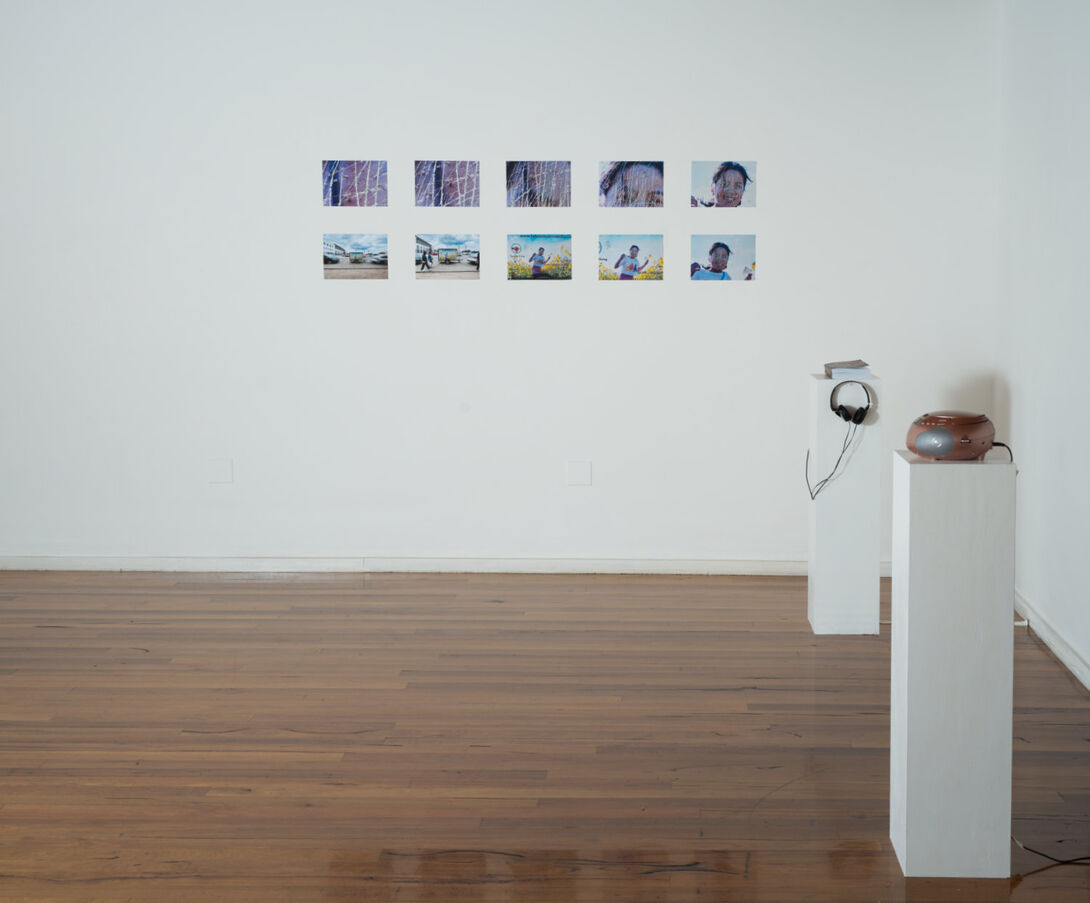
Image courtesy of avillagebeforeus.com
Installation view featuring works from left to right Poster Girl (2023), Beginner (2023), and Apparatus (2023) by Maya Nguyen. Image courtesy of A VILLAGE BEFORE US
Where did the initial idea for this show come from?
It all began when Dr. Nora suggested we go to the Albert I. Goodman Collection of Vietnamese Art. Some of us had never seen [a collection] like this before. The ability to see into the past era echoes the need to be seen and to present one's current self. [Exhibiting artist] Ngô Hứa Minh Trí came up with the idea to display our [current work] here. We spoke with the foundation, and they were very enthusiastic.
The fact that some of the artists in the Goodman collection were classmates interests me. Their period was unique because Vietnam had not yet opened up to the outside world, preventing them from accessing contemporary technology or global art movements. They also had to deal with the nation's division and the ensuing split of the art movements. Some artists stuck to painting landscapes, while others used their work to advance state ideology, and others rejected and advocated for greater freedom of art expression. The similarity in the artistic atmosphere [to those of us] in Chicago in 2023 struck me. That spirit is one of the most important things we have brought to A VILLAGE.
How did you get connected with the artists?
This is especially fascinating because a few of us were acquainted but had never met in Vietnam. We met here [in Chicago] and through education. Five of us from Vietnam came here for education; two [were] already here; Dr. Nora [Annesley Taylor] and Dr. Justin [Quang Nguyên Phan] teach here.
It is almost as if you know everyone. Trí's father worked with my father many years ago. Minh is someone I know since, in my opinion, she is a very important senior artist. Nora was first introduced to Quy by his Hanoi-based teacher. It’s like a village.
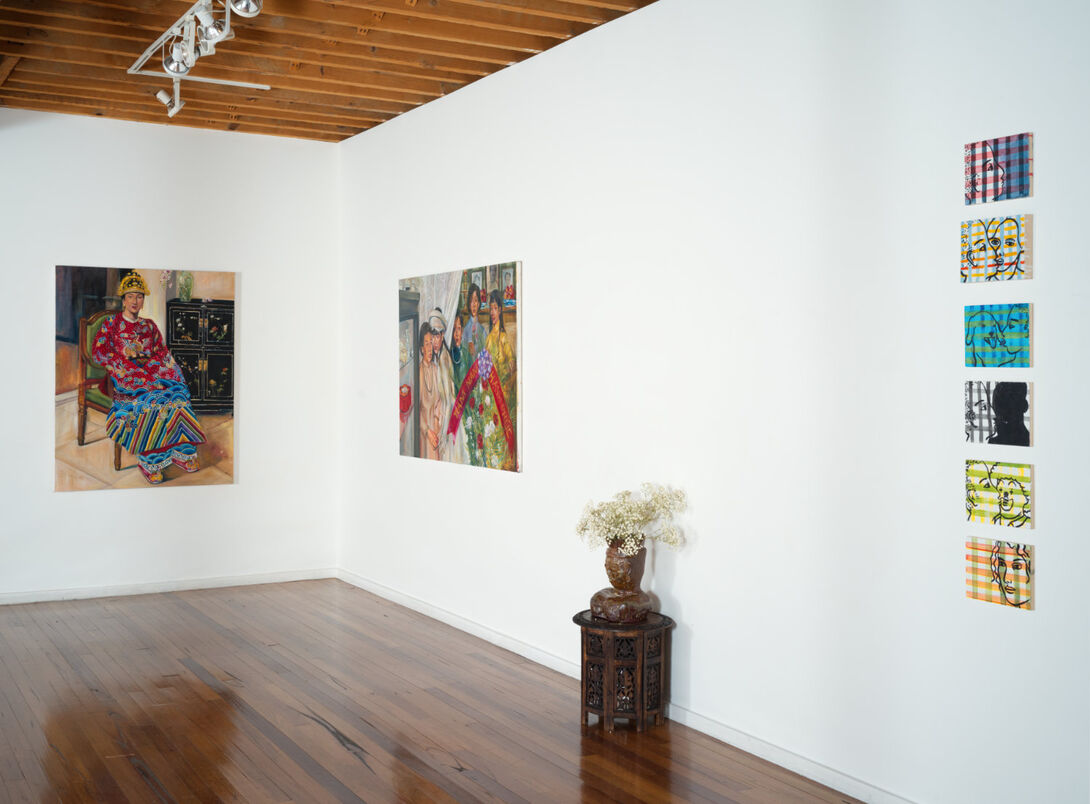
Image courtesy of avillagebeforeus.com
Installation view featuring works from left to right Nam Phương (2023), Lễ Cưới (The Wedding Ceremony) (2023), Our Angel (2022) by Nguyễn Trần Đoan Trang and Equality (2023) by Do Trong Quy. Image courtesy of A VILLAGE BEFORE US
How do you position yourself in relation to the show as curator and exhibiting artist?
I don’t consider myself a curator. I'm not overly strict with the term, but I do keep it in mind. I'm more like an artist working with artists. Or better yet, we are sister and brother. We are sister and sister. With that in mind, the studio visits or conversations that we had during the exhibition preparations received all of the necessary criticism while also developing a strong sense of friendship. I also focused on interactions between artists and curators. I did not write "curated by" on the wall text. I listed [my name] as one of the participants.
The exhibition’s run includes scheduled talks, lectures and performances. Could you explain your interest in activating the show with these different modes?
Each event served a different purpose. Dr. Nora’s lecture opened the threshold to dialogue with the Goodman collection in public. Justin Quang Nguyên Phan, a faculty member at the University of Illinois at Chicago, shared part of his upcoming book. His talk, “Dis/Embodiment: Nonaligned Aesthetics in Contemporary Vietnamese Art,” presented a chance to look into the practices of other Vietnamese contemporary artists beyond the exhibition.
Collaborating with Working Title and inviting [[Rehearsal]] to perform was an act of expanding the exhibition's dimension. It is not only about forming a Vietnamese community, but also about interacting with concurrent communities.
Ultimately, through conversation, interaction, and exchange with its audience and community, the activities activated the exhibition as a living, evolving, and vibrant entity, activating the “nowness” that we intentionally wanted to display.
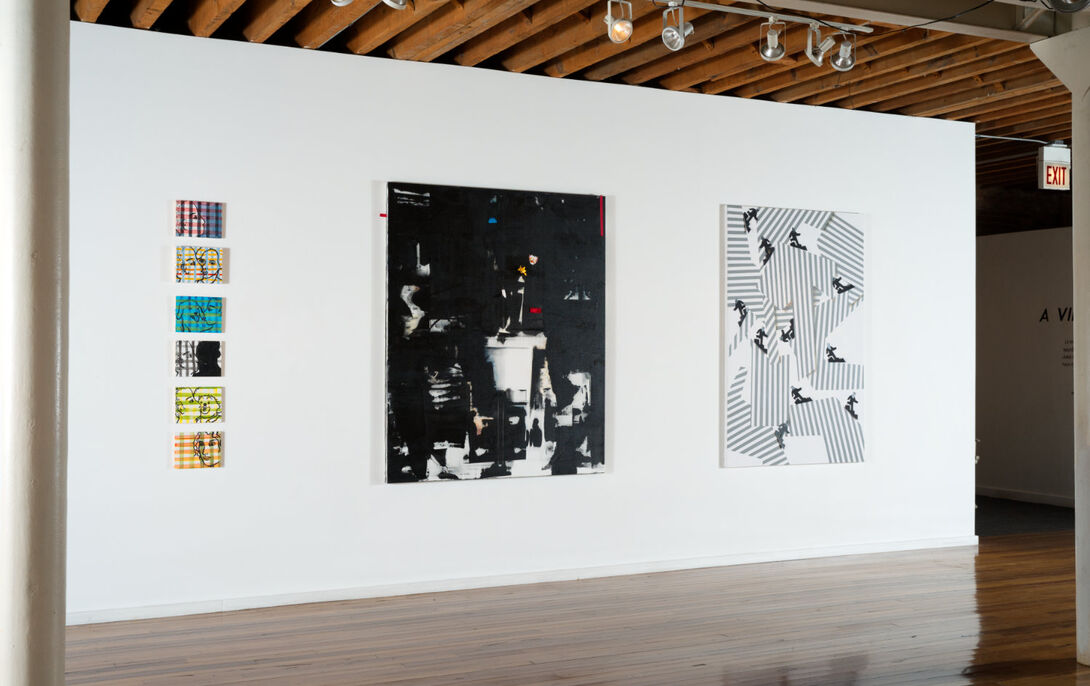
Image courtesy of avillagebeforeus.com
Installation view featuring works from left to right Equality (2023), A Clyfford Still life (2023), Q Stealer running on Frank Stella stripes (2023) by Do Trong Quy. Image courtesy of A VILLAGE BEFORE US
Could you explain the exhibition’s title, A VILLAGE BEFORE US, and its word play?
A VILLAGE embodies fundamental aspects of Vietnamese culture and a sense of community. It evokes both a paradox and a form of self-reflection. It conceals a query: "Vietnamese artists are..." The words used to describe the Vietnam art scene are based on common themes such as war, exile, identity, forcing each individual to fit into a readily understood collective name. Whatever we do, we risk running into paradoxes.
Apart from its reverberation of A VILLAGE on collectivism, “US” specifically reflects the concept of community building and also plays with the name of the current location of this collective group—the United States. “BEFORE” is an echo of “after,” as dimensional as it is spatial and linear. “BEFORE” can then be found in this linguistic hide-and-seek, as its placement in space raises the issue of future time. What will a village be like when it stands in front of the United States, then?
